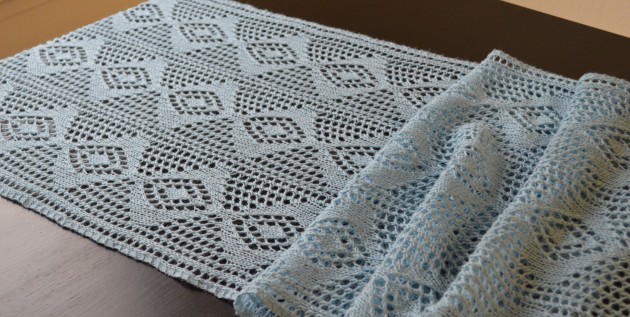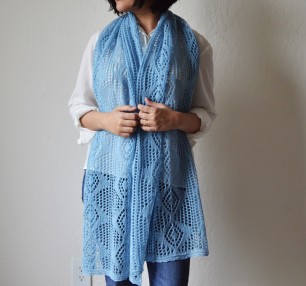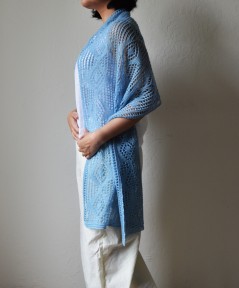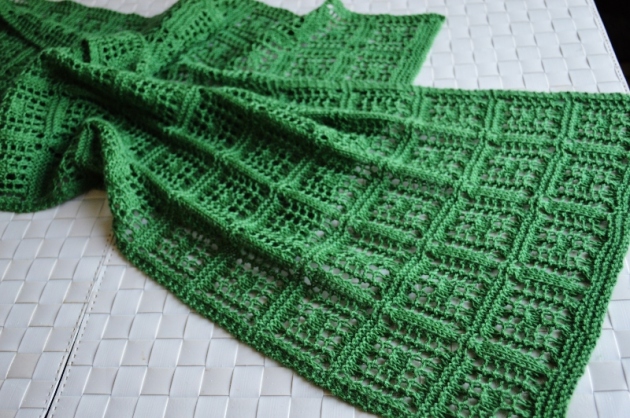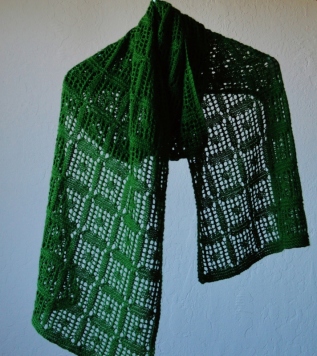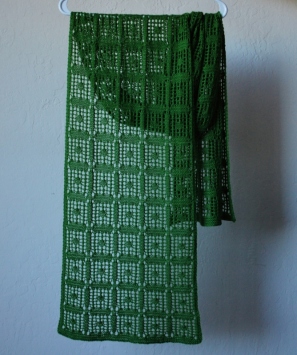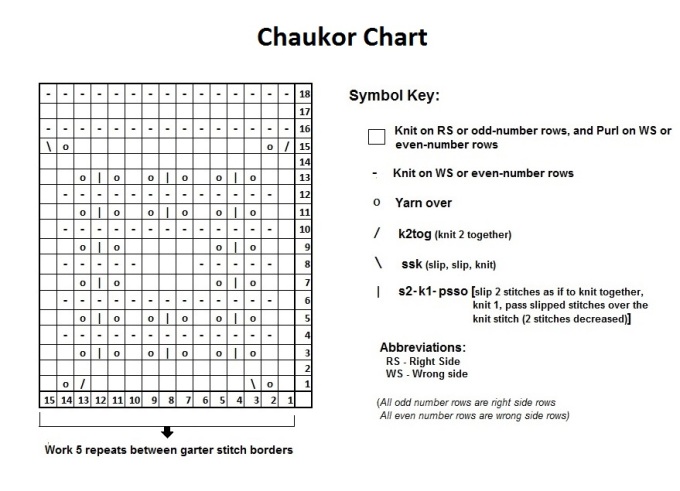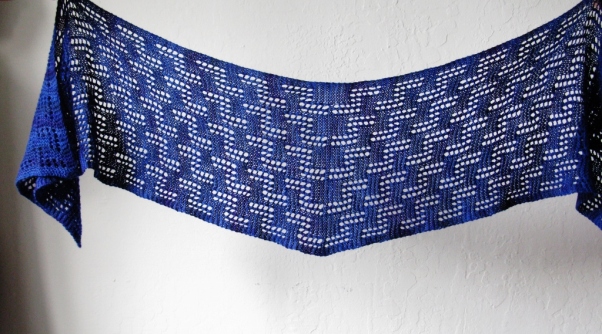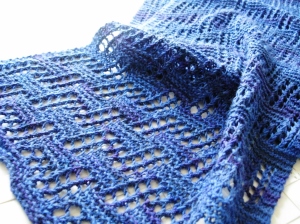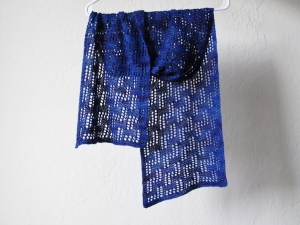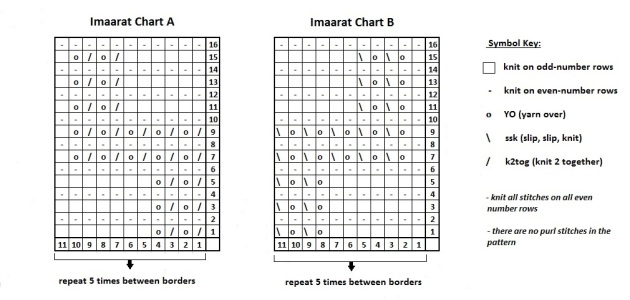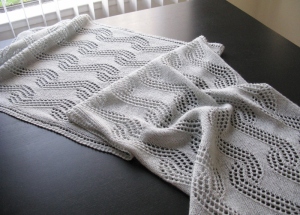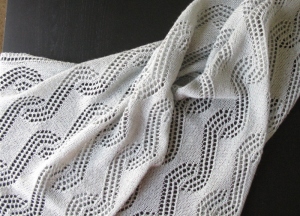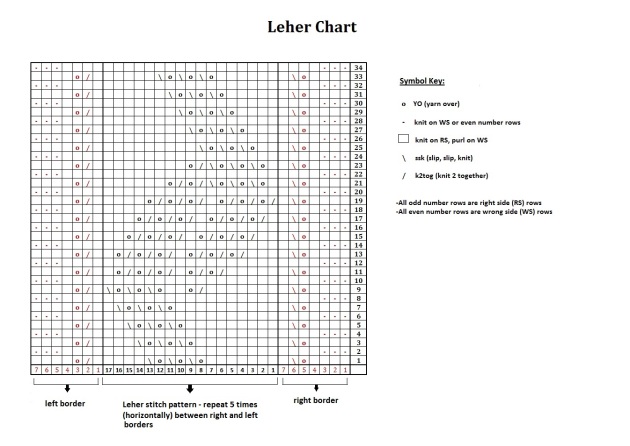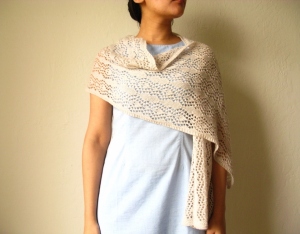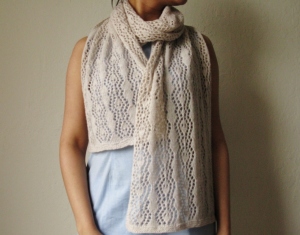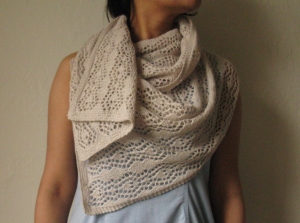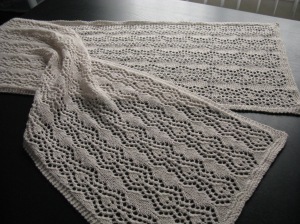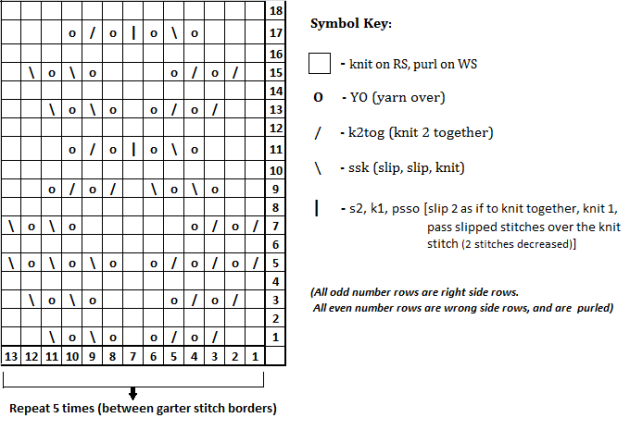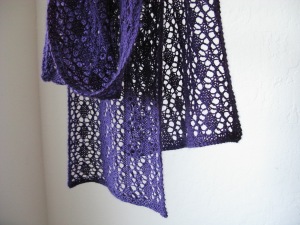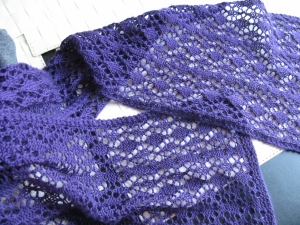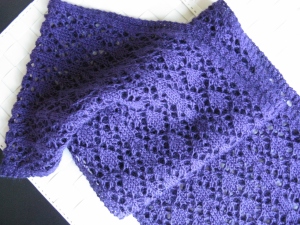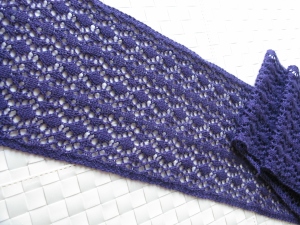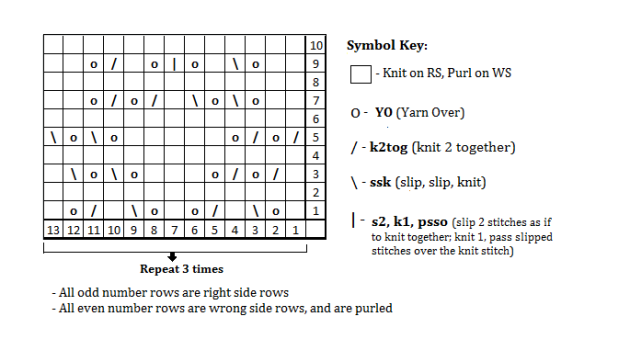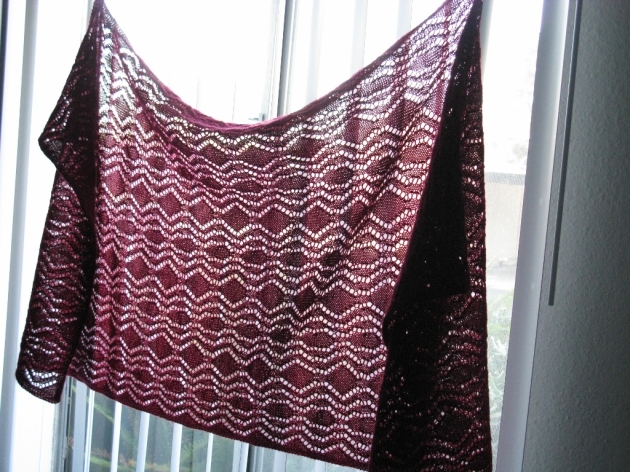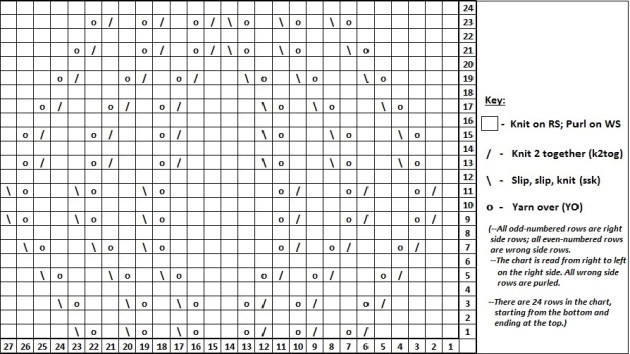Download PDF version of the pattern
Link to Ravelry page
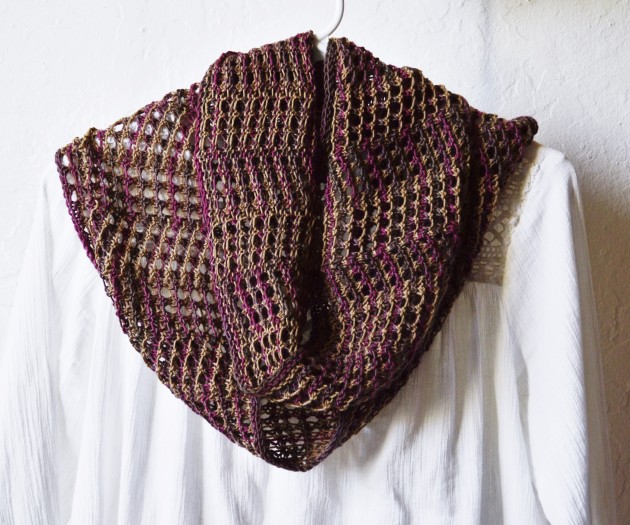
This striped, mesh-like cowl (infinity scarf) features a simple, easy-to-memorize stitch pattern. Alternating sets of “k2tog, yo” and “yo, ssk” worked over alternating stockinette and garter stitch sections create a wavy, chevron-y fabric, and an interesting play of colors and texture.
The cowl is knit in the round, starting with a single garter ridge followed by several rows knit in pattern, and finally another garter ridge before the bind off. If you’d like a more prominent garter stitch border you could work 4 or 6 garter stitch rows after the CO and before the BO.
Yarn – The pattern lends itself nicely to all kinds of yarn and color combinations (solid + solid / solid + variegated / semi solid + variegated, etc). For the sample shown in the photos, I used approximately 450 yards of yarn – about 230 yards of a painted, two-color sport weight yarn (Henry’s Attic Superwash Sport Paints) as the main color, and 220 yards of a solid fingering weight yarn (Cascade Heritage Sock Solids) as the contrast color.
Finished Dimensions
68” circumference x 8” depth
Needles
US size 6 or 4mm needles (40” or 32” length)
Notions
- Stitch markers
- Blocking pins and wires
Gauge
15.6 stitches and 30 rows = 4 inches (measured over pattern stitch after blocking)
Abbreviations
- CO – Cast On
- MC – main color
- CC – contrast color
- sts – stitches
- k – knit
- p – purl
- YO – yarn over
- k2tog – knit 2 stitches together
- ssk – slip, slip, knit the two slipped stitches together
- sts – stitches
Instructions to knit the cowl
Cast on 266 stitches loosely, using the Main Color (MC).
You could cast on a different number of stitches depending on the size you want. Just make sure the number you’re casting on is a multiple of 14 and that you cast on loosely.
Join to knit in the round, taking care not to twist your stitches. Place a marker to mark the beginning of the round.
- Knit one row
- purl one row
1 garter ridge done. If you want a more prominent beginning border, work the two rows above 2 more times (4 more rows). Otherwise, skip to next step.
You will now start working in the main striped-lace stitch pattern. The following four rows make up the pattern stitch (worked over a multiple of 14 stitches).
Optional: Place a marker after every repeat if you’d like to. You’ll have to use 19 markers including the beginning-of-round marker, but it makes knitting the cowl easier and minimizes mistakes.
Switch to CC –
Row 1 – *K8, (yo, ssk) 3 times*, rpt from * to * till end of round
Row 2 – *p7, k7*, rpt from * to * till end of round.
Switch to MC –
Row 3 – *(k2tog, yo) 3 times, k8*, rpt from * to * till end of round.
Row 4 – *k7, p7*, rpt from * to * till end of round.
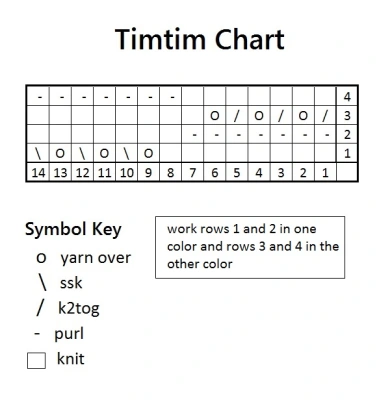
Repeat rows 1-4 (rows 1 and 2 in CC and rows 3 and 4 in MC) thirteen more times (total 14 repeats) or till the cowl is about half an inch shorter than the desired width. Slip markers as you go (if using).
Then knit rows 1 and 2 once more (in CC).
To end:
Switch to MC –
- Purl one row
- Knit one row
If you worked 4 extra rows for the beginning border, then work the two rows above 2 more times (4 more rows). Otherwise, skip to next step.
Loosely bind off all stitches knitwise.
Wet block to desired measurements; weave in ends.







